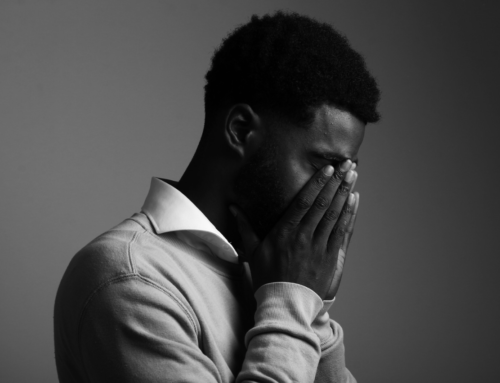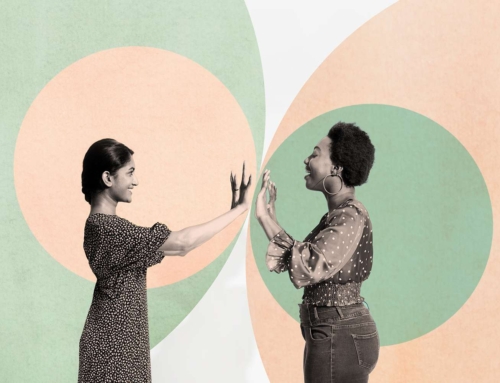
LOCKDOWN LIMBO
We survived lockdown 2020 and even 2021’s ‘circuit breaker’ but many of us are still feeling the effects of lockdown. We know Covid is still an issue and something we need to protect ourselves from. Facemasks and hand sanitizer in every corner are constant reminders of this. Life started to return to a somewhat pre-Covid normal at the end of last 2020, but we aren’t back to normal. There are so many things that we are still doing differently. Things that have not started back, and a level of comfort that just isn’t entirely there. We are in a state of limbo.
For so many of us, work has changed dramatically. Many people are still working from home or doing a bit of both. Activities haven’t gone back or are modified in ways that allow us to do them. We are checking in everywhere we go and have mastered the QR code. It’s not life as we use to know it. It’s a type of limbo. We were excited to get out of lockdown and to be able to do things again. It felt like we were getting back to normal. Then it plateaued and we are left waiting for the last remaining things to change. It will never be the same. Things will be forever different. Some things for the better. But we aren’t there yet. There is still change to come, change that will allow us to return to a closer version of our past normal.
This limbo is creating a feeling of unease for many of us. We are concerned with Covid, however that’s not the unease. It’s the sense of things not being the same, friends not being the same, not having the same excitement to do things, feelings of anxiety when going out, overall just feeling a bit weird.
Maybe there was too much comfort with staying home, we got use to watching reruns on Netflix, we forgot how to socialize, didn’t see people enough, did too many puzzles, didn’t laugh enough, lost a bit of trust, had too much time to think or drink. This left us all feeling a bit anxious.
There’s worry over whether to go out or stay in. When home there is an urge to be out, then when out, there’s an urge to be home. We want to see people, and also want to be left alone. It all feels so different, a bit strange, and we can’t shake that feeling.
Here’s what we need to remember. It felt this way at the start of lockdown. Those sad feelings, a sense of unease. That was there when lockdown started. The ‘circuit breaker’ reminded us how quickly it could be taken away again. Many of us retreated and decided it wasn’t worth trying to go out until it’s fully back to normal. That time is too far away. Normal (whatever that’s going to look like) is likely to still be a long way off. We need to find ways to adjust now. Check out our suggestions below on how to build your lockdown limbo resilience.
ADJUSTMENT & ACCEPTANCE
The unknown is the biggest cause of anxiety. Being in a state of knowing but not knowing can be incredibly anxiety provoking. Even when the news is bad, we feel better able to handle it than when we are waiting on an answer. Our minds race with all the possibilities until we know the outcome. Right now, we know enough to work on adjusting to the current state of things. We don’t know when things will change again, and this will require some acceptance.
ADJUSTMENT
There are many things we are still adjusting to. In most situations, communication will help in resolving some of the difficulties we have been encountering. For example, there are families where half of the household have return to working in the office while the other half remains home. There is a feeling of increased expectations for the ones staying home. And for those going to work, there is a loss of personal (alone) time. Both these situations can be resolved by communicating the difficulties that are currently being experiencing and explaining your needs. Do not expect that your partner or family is seeing things in the same way as you.
Small adjustment is easier than large movements. Exposing ourselves to a situation again and again in increasing levels of intensity allows us to slowly adjust to a situation. For example, start by catch up with a friend for a short walk, increase this to coffee and eventually progress to a meal. You might need to do this repeatedly until you feel comfortable to move to the next stage. Try to identify aspects that make it more comfortable for you, such as meeting out or catching up at home. Or meeting with someone you are close to verses a more casual friendship. Adjusting means going slowly to make only small changes and waiting to feel comfortable before making the next change.
ACCEPTANCE

Acceptance does not mean you like it. It doesn’t mean that you are okay with it. And it does not mean giving up. It simply means that you acknowledge any discomfort or distress that is there and don’t try to avoid or get rid of it. Any type of pain or discomfort is generally avoided. By avoiding we never deal with a situation, it is left there to cause us further discomfort in the future. Acceptance allows us to acknowledge what is there (not avoid) and continue on despite its presence. It is about focusing moment to moment on our current state of being.
To help build acceptance try to identify your emotion and acknowledge its presence. For example, if you are feeling anxious, try telling yourself ‘I am feeling anxious, I don’t have to like it, I just have to let it be there.’
You can also try:
- I can make room for this feeling
- I can make peace with this emotion
- I don’t want it, although I can allow it to be there
- I give it permission to be where it already is







